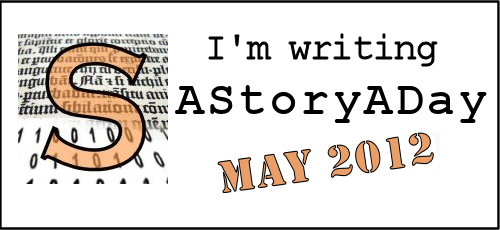Today’s guest article comes from Julie Duffy, founder of the StoryADay Challenge. Want to learn more about Julie? Check out this video interview I did with her earlier this week. Interested in trying your hand at writing a story a day? Go to the StoryADay website for more information.
Your prompt: Collect three ‘Story Sparks’ every day for a week.
By ‘story sparks’ I’m not talking about a fleshed out story idea, nor even a lesson you want the story to impart, or a fully-realized setting or character.
I’m talking about one-liners, flashes of memories, five-word character sketches, overheard lines from conversations, an arresting photo you saw online… any little thing that could be a spark for a story.
I want you to commit to doing three a day in order to create a habit that feeds itself*. When you begin looking for new creative ideas every day, you train to brain to start looking for them everywhere, subconsciously. If you know you have committed to finding three story sparks today, you will start to listen to the woman in front of you in the supermarket line; you will pay attention to the little girl twirling in the falling cherry blossoms – how she holds her arms, what she does with her feet, her face; you will listen to the way you retell an incident that happened to you and wonder if that might make a good story for a character.
Not only will you come out of the week with 21 sparks for stories, you’ll have turned on your writer brain, the one that notices and stores up details for later use.
*(If you need help making yourself stick to new habits, check out BJ Fogg’s Tiny Habits.)
Keeping Your Sparks
Faced with a blank screen, it’s hard to remember what had you feeling so creative when you were walking home yesterday. So write your story sparks down in the sketchiest way you can (three words, one sentence, quickly, quickly) and store them somewhere you can retrieve them.
If you like to write on paper, that’s great – as long as you keep to one notebook, so you don’t lose myriad scraps of paper.
I always carry my phone, so I’ve started keeping my story sparks in a big long text document on that. I keep it simple because, for me, nothing kills a creative idea faster than trying to classify it.
If you lack my irrational fear of organizational systems, a good option is to create a Google docs form and create a link to it right on your smart phone. Create a text-paragraph field that you can type your story spark into. Optionally, create keyword fields that can help you find the idea again later (e.g. for the girl dancing in the cherry blossoms, you could write about that, but also put ‘cherry blossom’ ‘young girl’ ‘spring’ ‘joy’ into the keyword fields). The advantages of capturing your ideas this way are that:
- You have access to them everywhere,
- The form automatically date-stamps your story spark for you,
- Google automatically stores your ideas in a spreadsheet which is certainly simpler to search through and organize than my clunky text file.
Care and Feeding of Your Story Sparks
When it comes time to write, use your story sparks as just that: sparks.
Sit and look at your story spark for a while. Put yourself back in the place where you decided it could be the spark of a story. Don’t rush this. Think about the line and who spoke it, the character, the memory, or the image. Think about whose story it belongs to. What are they like? What do they want?
At this point you can start writing or outlining (depending on your style) and you’re off.
But don’t forget to keep collecting more story sparks.







